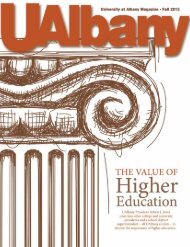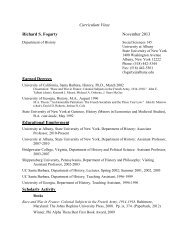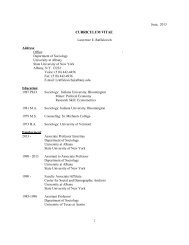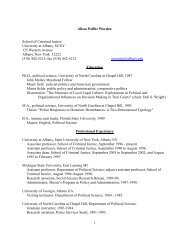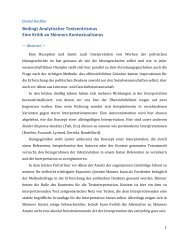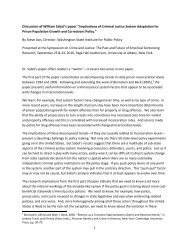Walking Corpses & Conscious Plants: Possibilist Ecologies in ...
Walking Corpses & Conscious Plants: Possibilist Ecologies in ...
Walking Corpses & Conscious Plants: Possibilist Ecologies in ...
You also want an ePaper? Increase the reach of your titles
YUMPU automatically turns print PDFs into web optimized ePapers that Google loves.
B<strong>in</strong>gham 102<br />
The <strong>in</strong>fluence of the past is wrapped up not only with the present moment but the<br />
future which will eventually follow. Like Kirkman's work, Saga of the Swamp Th<strong>in</strong>g is a<br />
graphic narrative which grew from artistic re-<strong>in</strong>terpretation rather than pure <strong>in</strong>vention.<br />
Though the premise of bodily reanimation that structures The <strong>Walk<strong>in</strong>g</strong> Dead is not new or<br />
<strong>in</strong>novative, it is nevertheless important. Rather than be<strong>in</strong>g detrimental to the import of<br />
the series, the decision of its creators to re<strong>in</strong>terpret a previously explored idea <strong>in</strong> relation<br />
to their own concerns can be seen as an <strong>in</strong>credibly valuable move <strong>in</strong> develop<strong>in</strong>g an<br />
<strong>in</strong>formed sense of cultural identity us<strong>in</strong>g artistry as a vehicle for maturation.<br />
In Saga of the Swamp Th<strong>in</strong>g, the character for whom the work is titled acts as a<br />
symbol whose existence <strong>in</strong>terrogates the supposed divisions between mank<strong>in</strong>d and<br />
nature, science and div<strong>in</strong>ity, and co<strong>in</strong>cidence versus fate. Each of these paired forces is<br />
revealed to connect to its opposite <strong>in</strong> the work. This structural component of the graphic<br />
narrative capitalizes upon the capability of the medium to illustrate multiple perspectives<br />
and emphasize how identity is shaped <strong>in</strong> relation to both communal and environmental<br />
surround<strong>in</strong>gs. In this series, writer Alan Moore and artists Stephen Bissette and John<br />
Totleben redesign a narrative about embodied consciousness and re-consider the creation<br />
of the Swamp Th<strong>in</strong>g as a chance to show the potential for sentience to exist apart from<br />
human subjectivity. Whereas the first version of the character was a scientist whose body<br />
was accidentally transformed, <strong>in</strong> Moore, Bissette, and Totleben's revival Swamp Th<strong>in</strong>g<br />
was never actually human despite the creature's possess<strong>in</strong>g cognizance.<br />
By tak<strong>in</strong>g advantage of the ability to illustrate boundaries which separate<br />
communities as well as maneuvers taken to bend or cross them, the form first transcends<br />
obsolescence by ma<strong>in</strong>ta<strong>in</strong><strong>in</strong>g the <strong>in</strong>tegrity of the orig<strong>in</strong>al project. Its ma<strong>in</strong> themes are



